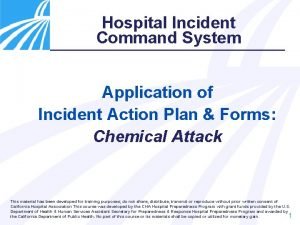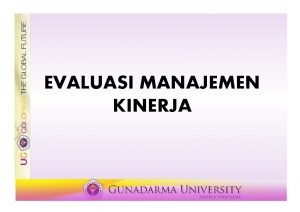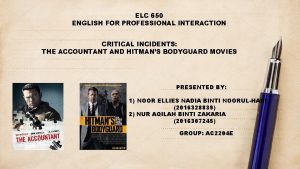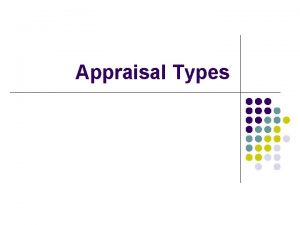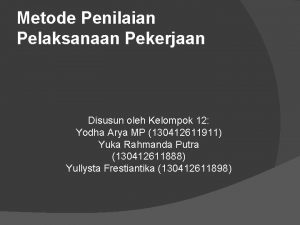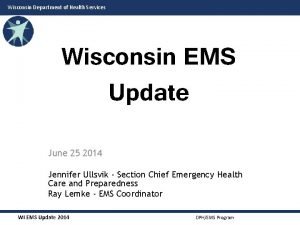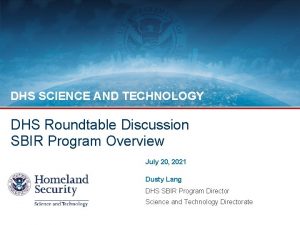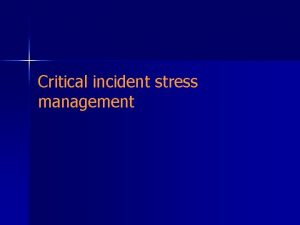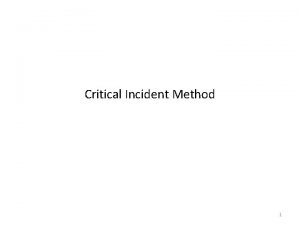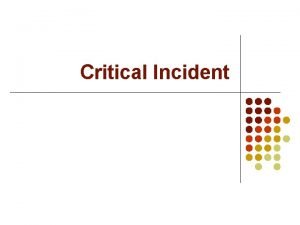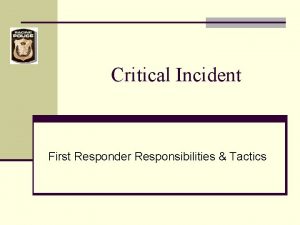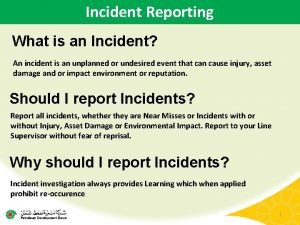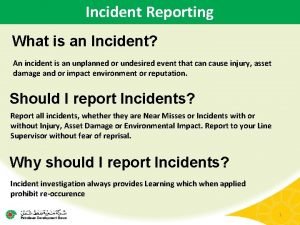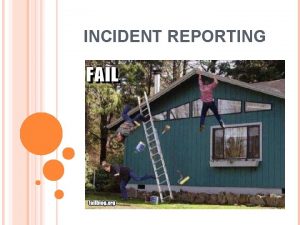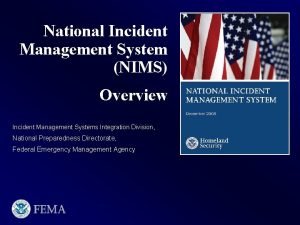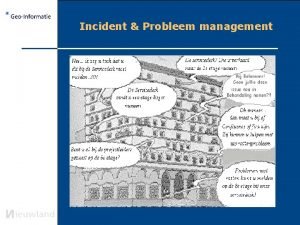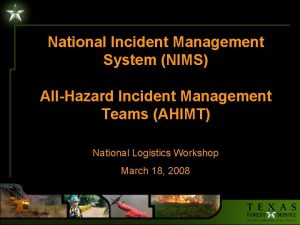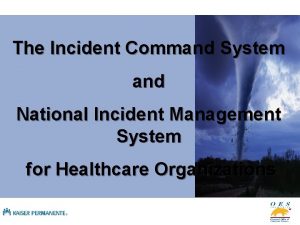DHS SCIENCE AND TECHNOLOGY Critical Incident Management Technology



















- Slides: 19

DHS SCIENCE AND TECHNOLOGY Critical Incident Management Technology Assessment and Exercise National Homeland Security Association Conference July 12, 2018 Lawrence A. Ruth, Ph. D. Director, Test and Evaluation Division Science and Technology Directorate National Urban Security Technology Laboratory CIMTA-T-B-1

Critical Incident Management Technology Assessment (CIMTA) • Purpose • Multi-agency exercise with 200+ responders to evaluate tactics, techniques and procedures when responding to an active-shooter situation in a major transportation hub • DHS S&T, through NUSTL, inserted relevant technologies into the exercise to evaluate their effectiveness in improving first responders’ preparedness and response Grand Central Terminal in New York City • Technology Assessment • Technical performance • Human factors performance • Potential operational value & suitability DHS Science and Technology Directorate 2

CIMTA Partners • New York Police Department—exercise development and execution • Fire Department of New York—exercise development and execution • Metropolitan Transportation Authority (Police Department and Metro North Railroad)—exercise development and execution • New York State Police—exercise execution • U. S. Army National Guard—exercise execution • Homeland Security Operational Analysis Center and Behavioral, Economic & Social Science Engine—assessment planning, execution and reporting • S&T’s Homeland Security Advanced Research Projects Agency— technical and program support • S&T’s National Urban Security Technology Laboratory (NUSTL)— event sponsor, technology selection, assessment and reporting oversight

Technology Selection Capability needs from New York first responder agencies Suggestions from DHS/S&T organizations Request for Information responses Selected technologies DHS Science and Technology Directorate 4

CIMTA Technologies Desired Capabilities Selected Technologies Technology Providers Android Team Awareness Kit (ATAK) NEON Display and Trackers Military Overlay Editor (MOLE) Air Force Research Laboratory TRX Systems, Inc. Robotic Research, LLC Firefly-EAGL (Emergency Automatic Gunshot Lockdown) EAGL Technology, LLC Facial Recognition Tac. ID Mobile Ideal Innovations, Inc. Patient Tracking Fling Emergency Services Group International, LLC Supporting Communications MPU 5 Radio Persistent Systems, LLC Blue-force Tracking (BFT) Gunshot Detection (GSD) DHS Science and Technology Directorate 5

ATAK/MOLE • ATAK • Software app supporting location tracking of persons • Provides messaging and overlay capabilities • Used with MOLE tracking devices and MPU 5 radios to transmit data • MOLE Location Tracker • Uses inertial sensor, radio signals • Requires initial calibration DHS Science and Technology Directorate 6

NEON Tracker • Worn on belt clip, paired with Android smartphone • Smartphones transmit data and display location • Uses inertial sensor, radio signals • Requires initial calibration DHS Science and Technology Directorate 7

Gunshot Detection - Firefly EAGL • Sensors installed near simulated shootings • Battery-powered sensors use sound-energy signatures • Multiple sensors can triangulate shot locations • EAGL server confirms potential gunshot, assesses caliber, transmits alerts DHS Science and Technology Directorate 8

Facial Recognition - Tac. ID Mobile • Smartphone app compares facial photos with facial image libraries • During exercise, photos of “bystanders” and “victims” compared with 75 participants enrolled in database DHS Science and Technology Directorate 9

Patient Tracking - Fling • Smartphone app (i. OS) for tracking patients using image recognition • During exercise, issued to FDNY responders engaged in patient triage • Establish initial patient records, which can be updated and tracked as individual patients move through the treatment system DHS Science and Technology Directorate 10

Supporting Communications – MPU 5 (Persistent Systems) • Communicates over mesh network of multiple radios • Provided communications for ~30 sensors & trackers, ATAK/MOLE BFT, Firefly-EAGL GSD, video follow cameras DHS Science and Technology Directorate 11

Video Wall • • Located in observation area 14 x 6 feet comprising 12 monitors Video from follow cameras 3 technologies (Firefly EAGL, ATAK/MOLE, NEON) DHS Science and Technology Directorate 12

Technology Integration Design DHS Science and Technology Directorate 13

Technology Performance Measures DHS Science and Technology Directorate • • • Completeness of information provided Correctness of information Currency (communications/networking) Comprehensibility (user interface) Convenience (human factors) 14

Summary of Technical Findings Performance Measure Findings Completeness of information • Technologies provided gunshot locations, responder tracking, victim tracking, facial ID Correctness of information • MOLE & NEON accuracy within 10 -15 feet when reference signals available • ATAK/MOLE tracks frozen • Gunshots reported from all active areas • Facial ID—some false matches, but no misses Currency of information • Commercial LTE & Wi-Fi worked for NEON, Tac. ID Mobile and Fling • Mesh radio network suffered crashes & slowdowns Comprehensibility • On-screen data difficult to interpret • Multiple displays for BFT & GSD confusing Convenience • BFT set-up times too long for emergency response • Wearable devices slow to don and uncomfortable DHS Science and Technology Directorate 15

Responder Feedback Positive NEON BFT: highly positive reaction—several observers said they could usually determine location of responder teams Firefly-EAGL GSD: useful for providing awareness of shots and shot locations Fling Tracking: effective for providing initial identification and tracking of victims on-scene through transport out of GCT Negative MPU 5 Radios: mesh network connectivity issues for both data and voice communications Firefly-EAGL Display: difficulties interpreting the display to determine gunshot locations ATAK Display: tracking displays were frozen NEON Icons: uncertainty reported about what the icons meant—could not identify affiliation/function of wearer DHS Science and Technology Directorate 16

Additional Insights • BFT less useful in initial response, but increasingly effective and important as incident begins to stabilize • Deconfliction and coordination are important BFT applications • GSD a major need—useful in active-shooter responses • Systems integration essential—all information on single display • Facial recognition useful and has multiple applications • Fire and EMS personnel see medical tracking as useful • All technologies require rigorous training and adoption into concepts of operations DHS Science and Technology Directorate 17

Conclusions Technologies showed potential value, but improvements suggested • Communications—more robust radio networks • Data integration—GSD and BFT data combined on one geospatial display and used with agencies’ existing systems • User interface—shooter and responder locations more immediately obvious to more quickly determine operational response • Human factors—near instant-on capability (faster donning & calibration) • Operational suitability—all technologies require training, familiarization and adoption into concepts of operations DHS Science and Technology Directorate 18

DHS Science and Technology Directorate 19
 Dhs s&t org chart
Dhs s&t org chart Critical semi critical and non critical instruments
Critical semi critical and non critical instruments Semi critical instruments in dentistry
Semi critical instruments in dentistry Incident objectives that drive incident operations
Incident objectives that drive incident operations Think central science fusion
Think central science fusion Contoh critical incident asn
Contoh critical incident asn Critical incident questionnaire example
Critical incident questionnaire example Slideshare
Slideshare Problem understanding adalah
Problem understanding adalah Elc650
Elc650 Contoh critical incident
Contoh critical incident Critical incident consulting
Critical incident consulting Critical incident essays
Critical incident essays Contoh metode critical incident
Contoh metode critical incident Contoh critical incident technique
Contoh critical incident technique Potential rating scale appraisal problems
Potential rating scale appraisal problems Subject science
Subject science Compare non-critical readers with critical readers.
Compare non-critical readers with critical readers. Wisconsin ems licensing
Wisconsin ems licensing Dhs uny
Dhs uny



